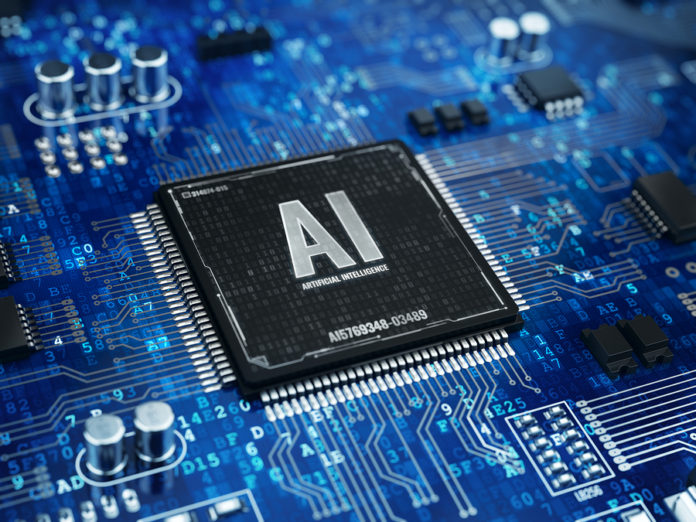
The food industry isn’t known for its early adoption of technology. But, spurred by innovative startups, artificial intelligence (AI) may prove the exception. Here are six examples of how the food industry is already using AI, or could be using it in the very near future.
Sorting food
One of the most time-consuming processes in any facility that receives fresh produce is sorting. For example, sorting potatoes by size can help manufacturers decide which ones should be made into French fries versus potato chips or hash browns. Sorting out off-color tomatoes will help decrease rejection by the retailer or consumer. And, of course, all foreign matter needs to be sorted out as well.
That’s why TOMRA Sorting Food develops sensor-based optical sorting solutions with machine learning capabilities. The systems use various technologies, including cameras and near-infrared sensors, to “view food in the same way that consumers do” and sort it based on that perception. The result is fewer hours spent on manual sorting, higher yields and less waste, and better quality.
Managing the supply chain
With new food safety regulations and the increasing need for transparency, supply chain management is a top priority for all food companies. A 2017 article in Food Online described several ways the food industry is using AI to improve supply chains:
- Food safety monitoring and testing product at every step of the supply chain
- More accurate forecasting to manage pricing and inventory
- Tracking products from farm to consumer to provide transparency
Ensuring employees follow personal hygiene procedures
In a food plant just like in a kitchen, good personal hygiene is necessary to ensure food is safe — and the facility is compliant.
Last year, technology company KanKan signed a huge deal to provide an AI-powered solution for improving personal hygiene among food workers in China. The system, which can be used in restaurants as well as manufacturing facilities, uses cameras to monitor workers, and then employs facial-recognition and object-recognition software to determine whether workers are wearing hats and masks as required by food safety law. If it finds a violation, it extracts the screen images for review. According to the company’s press release, the accuracy of this technology is more than 96%.
Developing new products
Wouldn’t it be great if food manufacturers could know their products would be a home run before they even hit the shelves?
Gastrograph AI purports to help food companies do exactly that. Their technology uses machine learning and predictive algorithms to model consumer flavor preferences and predict how well they will respond to new tastes. The data can be segmented into demographic groups to help companies develop new products that match the preferences of their target audience.
Cleaning processing equipment
This one goes into the near-future category.
As everyone in the industry knows, cleaning processing equipment requires a lot of time and resources, including water. Researchers at the University of Nottingham are developing a system that uses AI to reduce cleaning time and resources by 20-40%.
The system, which they call Self-Optimising-Clean-In-Place, or SOCIP, uses ultrasonic sensing and optical fluorescence imaging to measure food residue and microbial debris in a piece of equipment and then optimize the cleaning process.
Team leader Dr. Nik Watson explains: “To prevent product contamination, many food and drink manufacturers use a non-invasive, Clean-in-Place (CIP) system to wash inside food processing equipment without disassembling it. As CIP has to operate ‘blind,’ it is designed for the worst case scenario. In daily use this often results in the over-cleaning of production lines.”
The researchers predict that the system could save the UK food industry £100 million per year.
Growing better food
Here’s another one for the future category — what if AI could help farmers actually grow better food by creating optimal growing conditions?
That’s the goal of Sentient, a company that’s using AI to monitor the effects of variables like UV light, salinity, heat, and water stress on basil. With the data, they’re developing “recipes” for the perfect crops. Moving this one from lab to field might take some time, but if that means tastier pesto, then let’s hurry it along!
At the farming level, AI is also being used to detect plant diseases and pests, improve soil health, and more.
___________________________
The grocery industry is also using AI to offer customers targeted offers, manage inventory, and reduce waste. And many food-focused AI platforms are available for consumers. For example, Wellio uses machine learning and behavioral science to provide personalized recipe recommendations and then allows customers to order their groceries online, and Habit develops personalized nutrition plans based on the results of a nutrition test.
These are only a few of the applications of AI in the food industry. As the technology gets better, we expect to see many more!





![[Webinar] Chaos into Clarity: Future Proofing Your Food & Beverage Company with ERP](https://foodindustryexecutive.com/wp-content/uploads/2024/07/Aptean-Chaos-into-Clarity-Future-Proofing-Your-Food-Beverage-Company-with-ERP-218x150.png)


